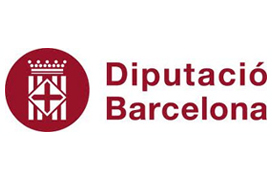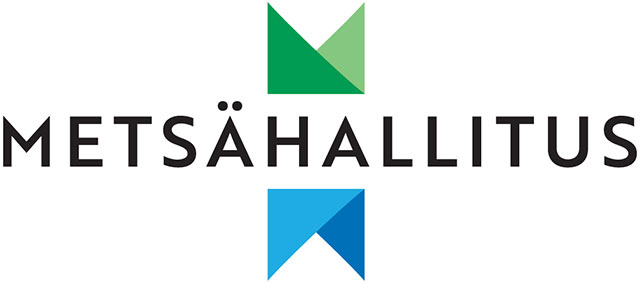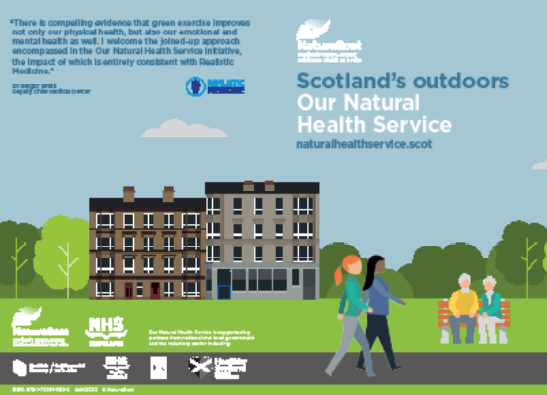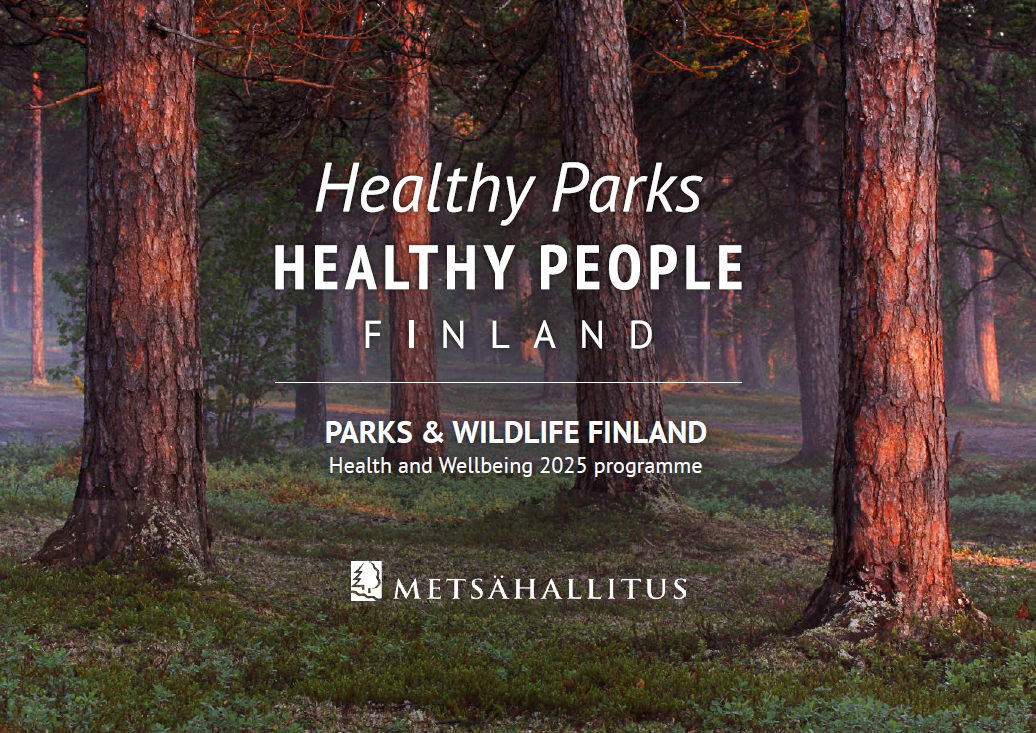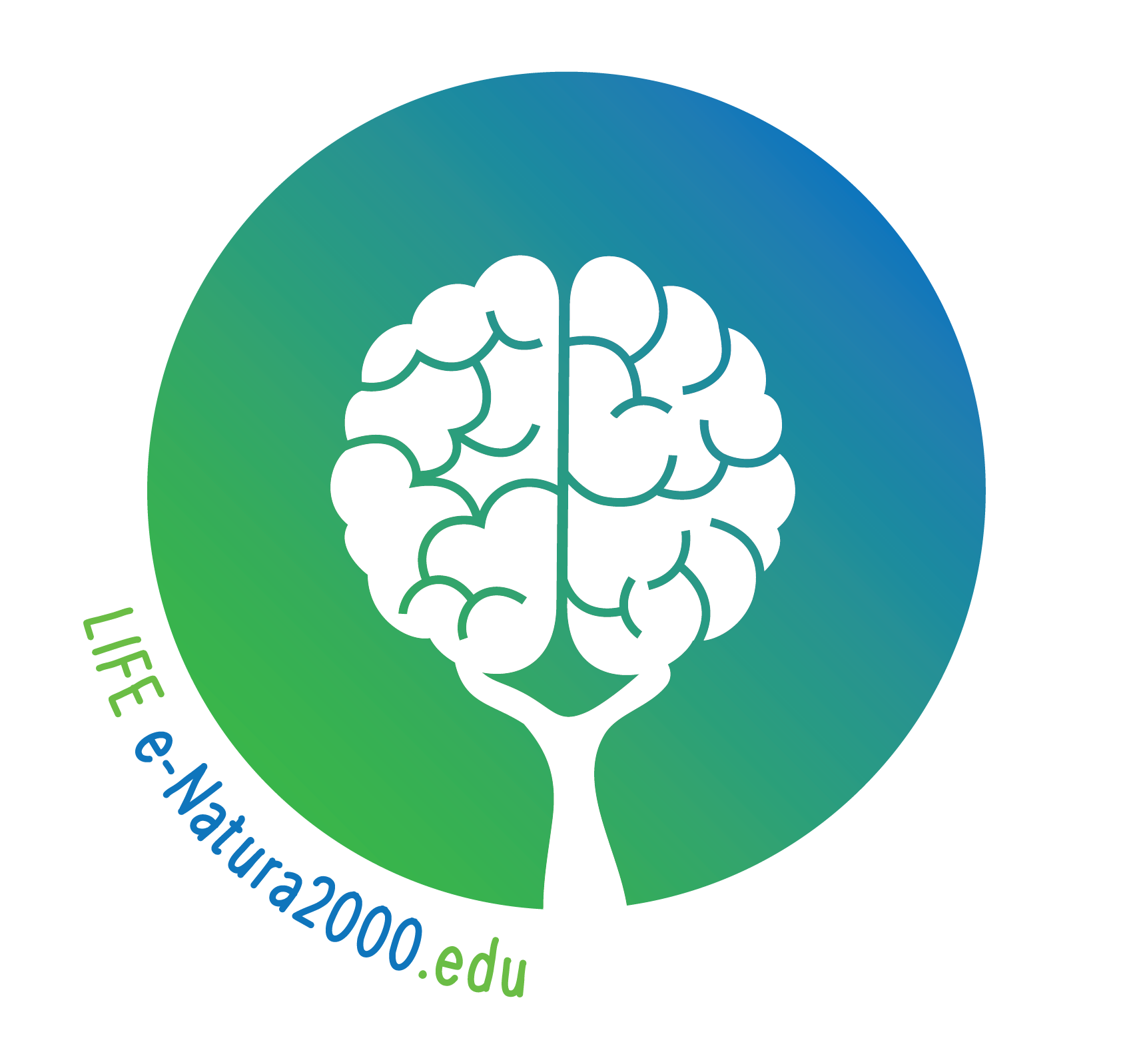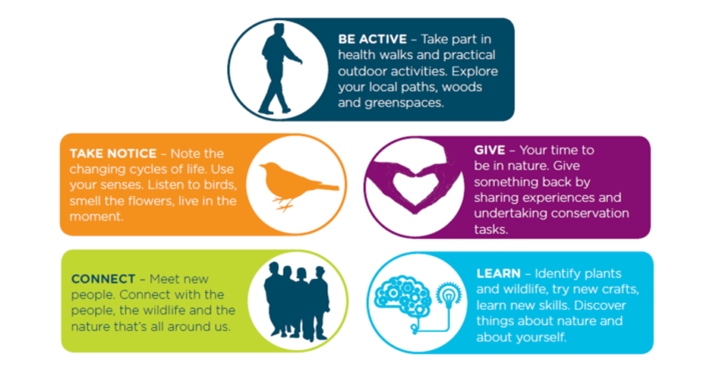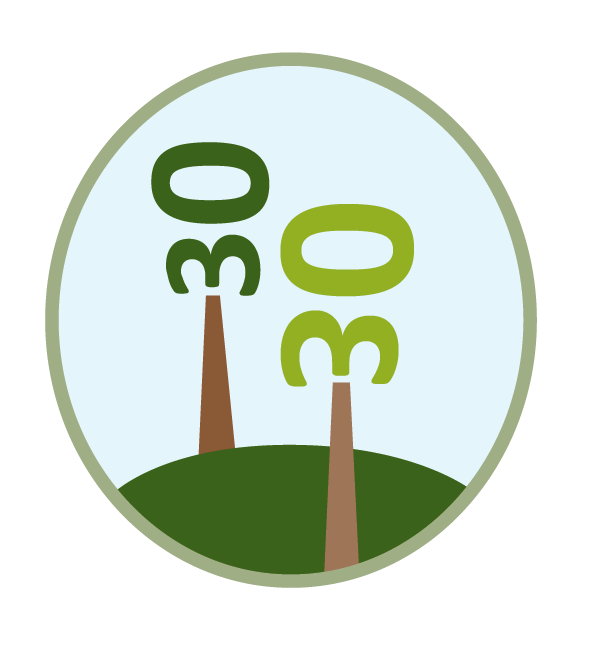HPHPe Toolkit: Health & Well-being benefits from Parks & Protected Areas
What is Healthy Parks Healthy People Europe (HPHPe)?
Healthy Parks, Healthy People is a Europe wide programme to support Parks and Protected Areas at the national, regional and local level to deliver better outcomes for the health of people and nature. It aims to improve public health and well-being for all, reducing health inequalities, protecting, restoring and investing in biodiversity, and responding to the climate emergency. All information on the programme can be found here.
What is this toolkit for?
The purpose of this document is to encourage understanding of and commitment to the principles of Healthy Parks Healthy People Europe (HPHPe). It provides a practical toolkit to aid the delivery of programmes and projects by Parks and Protected Areas which will contribute to people’s health and well-being.
Who should read this?
This guidance is aimed at those responsible for the management of Parks and Protected Areas. It is intended to provide simple and practical advice to a range of Park and Protected Areas staff, including planners, site managers, wardens and rangers.
How can it help you?
This toolkit is structured under the 4 pillars of the Healthy Parks Healthy People Europe programme. For each pillar, a range of tips, tools, information and inspiration are provided. A key part of this toolkit is the HPHPe check list. This aims to help Parks and Protected Areas staff to develop goals and actions across 7 areas of work, based on the learning and experience of our network.
It is designed to encourage you to consider your current practice and help you think about:
- how best to plan, manage and promote your sites to a wider range of people to improve their general health and well-being; and
- how to link your sites to the health sector so that people at risk of or experiencing specific illness / health conditions can be supported to make use of your sites
Authors
This toolkit was produced by the EUROPARC Federation and the Members of the Healthy Parks Healthy People Europe Commission. It was designed by Bárbara Pais. You can download a PDF version of the toolkit and its Annex here.
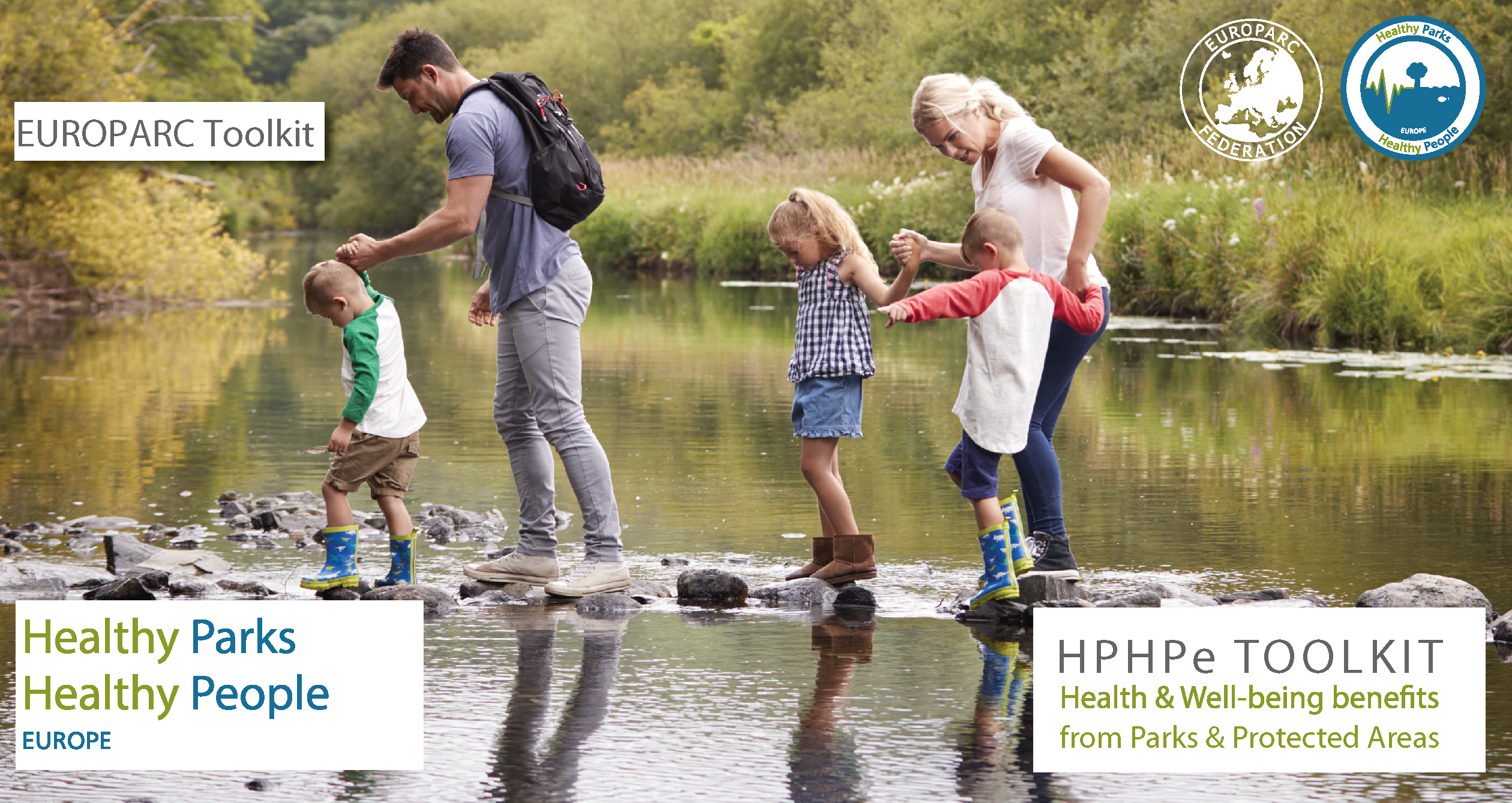
Introduction
Nature is Good for you Health
In recent years, study after study has shown significant and sustained increases in people’s health and happiness when connected to nature. For many people, this connection has been further emphasised during the coronavirus pandemic, be it the sight of wildlife from the kitchen window, the experience of the natural world changing through the seasons in our gardens or local greenspaces, or the opportunities that the easing of lockdowns brought to visit Europe’s Parks and Protected Areas.
Across many European countries, there are common public health challenges caused by our increasingly sedentary, urbanised lifestyles, growing social isolation, and an ageing population. The result is a wide range of non-communicable health conditions which could be prevented or reduced. More than one in four people will suffer from poor mental health during their lifetime, a percentage now likely to increase as a result of disruption to many people’s lives and livelihoods as a result of the pandemic. The deep seated health inequalities present in most countries will also have intensified.
Together with these health challenges, Europe is also experiencing a period of sustained biodiversity loss associated with the drive to more productive agricultural and forestry sectors, together with the removal of places for nature and replacement by buildings, industry, roads and other infrastructure, not to mention the impacts of climate change. To address these issues, there are well-developed and diverse systems of Parks and Protected Areas and a range of progressive policies for biodiversity and green and blue infrastructure at both the European and national levels. But more action is urgently needed as the EU Biodiversity Strategy for 2030 – Bringing nature back into our lives makes clear.
Europe’s Parks and Protected Areas are diverse, ranging from small nature reserves through to extensive working landscapes with millions of people living within them or close by. Many experienced significant visitor pressures following the easing of COVID-19 lockdowns during 2020. This has again turned the spotlight on some long-standing challenges for the management of these places resulting from growing visitor numbers, problematic behaviour, and conflicts between different user groups. At the same time, the pandemic has clearly shown the importance from a health perspective of investing in the provision and planning of these places in dealing with a pandemic. This is especially important for those in towns and cities where most people in Europe now live.
The European Green Deal has ambitions for a more sustainable Europe. However, the action required to improve public health and reduce health inequalities needs to be connected to the linked challenges of climate change and reversing the decline in the natural world that we depend on.
To support this vision, the EUROPARC Federation launched its Healthy Parks Healthy People Europe programme, as both a recognition of challenges and a call to action. More than ever, it
is now that we urgently need to look after our Parks, Protected Areas and other natural spaces, not just for the health of nature, but for the well-being of people too.
In many ways, the role of Europe’s Parks and Protected Areas in the delivery of health objectives is a natural extension of their traditional role in facilitating access and recreation and providing
opportunities for environmental education and volunteering. Aligning this work with health outcomes, developing action to address health inequalities and doing more of it in partnership with the health sector can be challenging. However, when it becomes a recognised part of the everyday business of Europe’s Parks and Protected Areas it will help increase the value both people and policy makers place on the protection of nature. It should also add significantly to the case for continued and additional investment in these natural assets.
The programme has a simple vision of “happier and healthier people more connected to nature-rich Parks and Protected Areas”.
Plans for the implementation of HPHPe are structured under the following pillars:
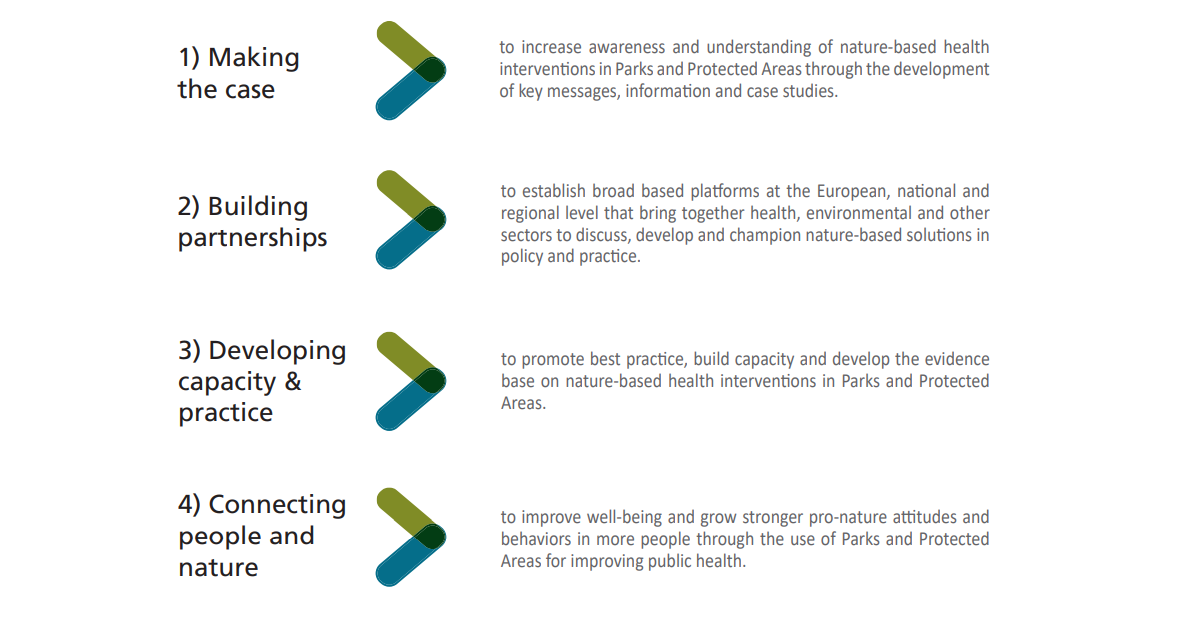
The programme is also characterised by the following cross-cutting themes, that are important to be considered across all 4 pillars, in order to ensure HPHPe can deliver maximum benefits for Parks and people.
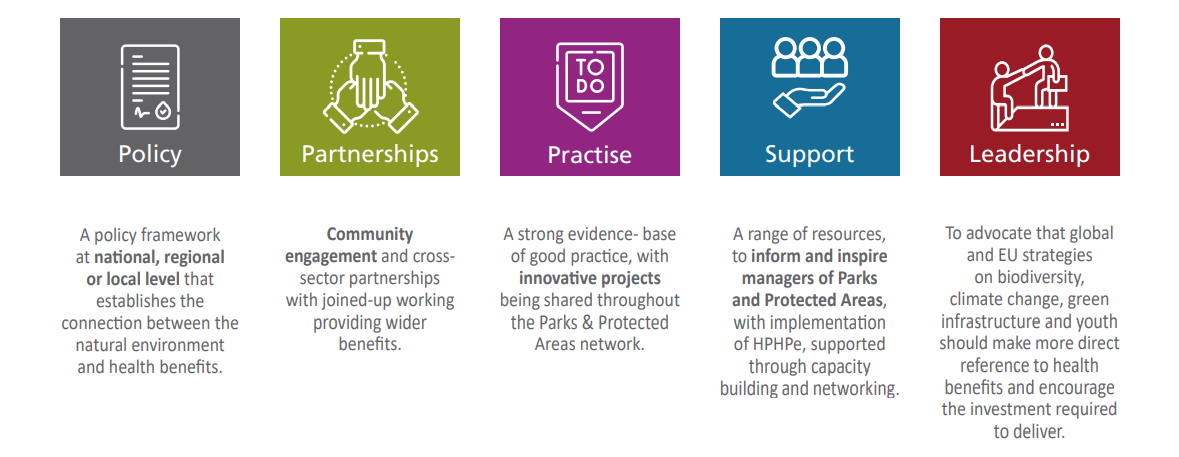
To deliver the HPHPe this toolkit has been developed, to enable Parks and Protected Areas, to consider their role in the delivery of health objectives. Fundamentally it seeks to ensure the importance of Parks and Protected Areas for health promotion and improvement is raised and adds to the case for the continued and additional investment in these natural assets. The 7 topics that are relevant to the work of Parks and Protected Areas are presented in the HPHPe check list. They are critical in delivering the 4 pillars of the HPHPe programme and advise on practical implementation and action at a national or Park level national or Park level.
Through the adoption of the HPHPe programme and with this toolkit, EUROPARC seeks to ensure that:
- More of Europe’s Parks and Protected Areas providing well managed, accessible facilities and engaging target groups in health- promoting activities.
- More policy, practice and partnership working to maximise the potential of Europe’s Parks and Protected Areas as key assets for improving public health and well-being and reducing health inequalities.
- More people from all backgrounds enjoying the health benefits of connecting with nature and supporting the case for better protection, restoration and further investment in Europe’s Parks and Protected Areas
HPHPe - Sustainable Development Goals, the EU 2030 Biodiversity Strategy - Bringing Nature back into our lives.
The Healthy Parks Healthy People Europe programme, delivered through the European network of Parks and Protected Areas is relevant to international EU policy.
Sustainable Development Goals (SDGs)
- SDG 3: Good health and well-being. Although SDG 3 Ensure healthy lives and promote well-bein for all at all ages, mainly focuses on health risk reduction, there is an aspect of promoting mental health and well being that Healthy Parks Healthy People Europe programmes in Parks can deliver.
- Target 3.4: By 2030, reduce by one third premature mortality from noncommunicable diseases through prevention and treatment and promote mental health and well-being, especially relevant.
- SDG 15: Life on land. Protect, restore and promote sustainable use of terrestrialecosystems, sustainably manage forests, combat desertification, and halt and reverse land degradation and halt biodiversity loss.
National sustainable development strategies should look to a Healthy Parks Healthy People approach in relating actions for Health and Nature.
1) Making the case
to increase awareness and understanding of naturebased health interventions in Parks and Protected Areas through the development of key messages, information and case studies.
Setting the scene
Europe’s nature is a health promoting asset, and our Parks and Protected Areas are well placed to support health outcomes for their visitors and those living near them.
There is increasing evidence that access to the natural environment can help guard against, treat and manage key health issues such as: depression, coronary heart disease and stroke, type 2 diabetes, obesity and dementia.
Europe’s Parks and Protected Areas offer a range of good practice, in increasing physical activity, improving mental health and addressing health inequalities.
Healthy Parks Healthy People Europe aims to show how the contribution of Parks and Protected Areas to health outcomes can be strengthened through greater recognition in relevant policy, practice and funding at the European, national and regional level.
Key Messages
- Positive contact with nature is important for human health. It can create wellbeing, prevent public health problems and promote an active lifestyle.
- Parks & Protected Areas connect people with nature and represent a valuable and value-for-money natural asset that can provide specific contributions to the delivery
of positive health outcomes. - Parks & Protected Areas contribute to individual and community health and wellbeing, and to wider aspects of economic health and growth.
- Planning and delivery of site management to achieve health objectives should be informed by and delivered through good Policy, Practice and Partnerships.
Did you know?
Physical and mental health are inter-related, and in many ways, inter-dependent. With an ageing population and more people with multiple health issues, the breadth of benefits offered from green exercise make it a useful tool for the health sector. Re-connecting with the environment through green exercise can help patients, their carers, and the general population in terms of healthy lifestyles and prevention of poor health or illness. Evidence shows that contact with nature contributes to good physical, mental, emotional and social health and well-being:
- A brisk 30 minute walk on five days of the week can reduce the risk of: heart attack and stroke by 20-30%; diabetes by 30-40%; hip fractures by 36-68%; bowel cancer by 30%; breast cancer by 20% and depression/dementia by 30%. Source
- One in four adults will experience mental health problems at some point in their lives. Outdoor activity and contact with nature can help sleep patterns, reduce stress, improve mood and self esteem, and provide meaningful social contact. Source.
- There is a growing body of evidence on the links between health inequalities and access to nature in urban, suburban and rural settings. Contact with nature can help reduce health inequalities at all stages of life: pre-birth, childhood, adult life and old age. Source.
- Experience of the natural environment by young people can be life changing in terms of confidence and skills that can enhance job opportunities. Source.
Case Studies
What did we learn?
- Gathering evidence to substantiate your rationale for parks involvement in health programmes, is a key element in ”Making the Case”.
- Offer evidence and guidance about people health and wellbeing to all the components of Protected Areas’ management: planning of uses and activities, ecosystem conservation, public use
management and communication. - Investing in visitor surveys that invite feedback about health benefits will pay dividends, in providing information that can influence perception and opinion about the value of the Protected Area.
- Learning from other situations across Europe helps so staying connected to and contributing to the EUROPARC HPHPe network is essential.
What you can do - HPHPe Check List
Making the case > Strategic planning
The positive links between health and environment are well established, and are becoming more evident in many policy areas such as planning, transport, sport, education and tourism. This provides an opportunity for Protected Area site managers to show that they are responding to these policies, and that their sites represent a valuable asset which can contribute to an overall policy framework that seeks public health benefits from a well managed suite of nature sites.
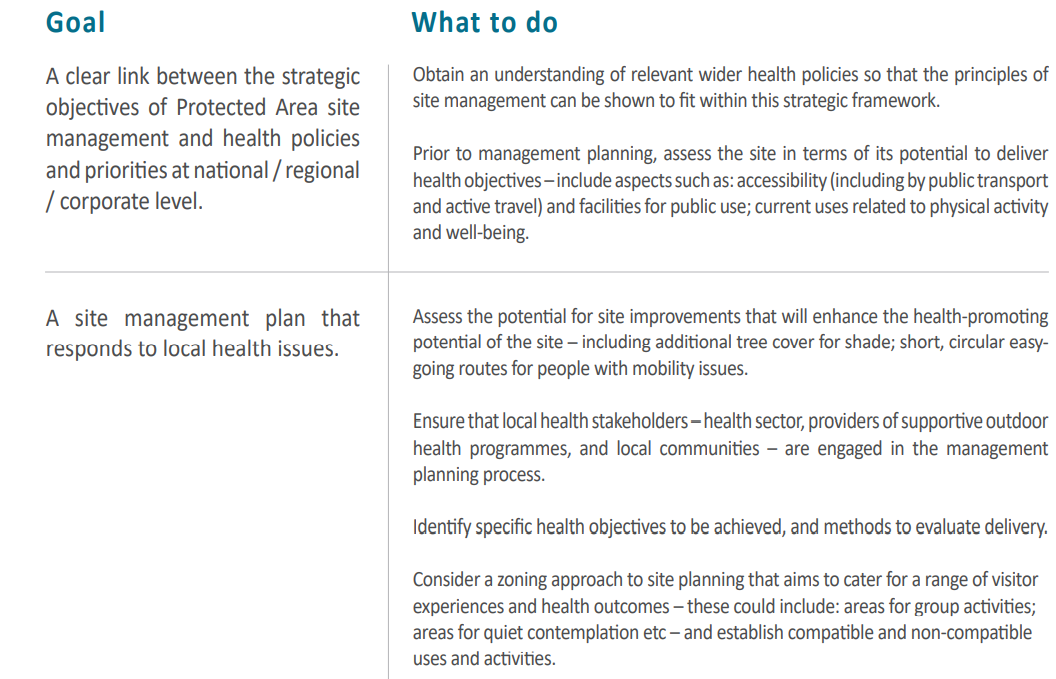
2) Building Partnerships
to establish broad based platforms at the European, national and regional level that bring together health, environmental and other sectors to discuss, develop and champion nature-based solutions in policy and practice.
Setting the scene
Closer links between environment and health are vital within the Healthy Parks Healthy People Europe framework, but cross sector partnerships can include also transport, leisure, education,
planning, sport, tourism and business.
HPHPe is all about promoting a shared understanding across sectors of the contribution nature can make to delivering better public health and closer partnership working. Key to this are co-produced policies, a common language to aid mutually supportive objectives and integrated delivery of projects and programmes. Many sectors have an interest in and role to play in developing nature-based solutions to social, environmental and economic challenges, and these can deliver direct or indirect benefits to health and well-being.
Protected Areas operate within the framework of national and regional policy on health and the environment. Experience suggests that these frameworks can be very helpful in supporting the delivery of health outcomes by individual Protected Areas, especially when they include:
- Reference to contact with nature in health policy;
- Structures and partnerships between relevant health and environment departments and organisations;
- Sources of funding for delivery of health outcomes.
Key Messages
- Calls for “biodiversity in all policies” are increasingly mirrored and complemented by calls for “health in all policies”.
- Engaging communities of place and interest is also vital for integrated planning, co-production and delivery.
- Use existing, or develop new networks to enable collaboration at strategic and operational levels between health, environment and other stakeholders.
- Secure organisational commitment to strategic partnerships by involving appropriate staff in their leadership / progress reports.
- Identify champions who can raise the profile of partnership and raise awareness of the shared objectives within their sector.
Case Studies
What did we learn?
- In establishing cross-sectoral partnerships,it’s important to spend time learning some of each others’ professional language.
- Understanding partners’ strategic priorities will help identify common ground and the co-benefits from working together.
- Local partnerships mean tapping into stakeholders’ detailed knowledge of issues and priorities and co-coordinating action to connect people to place.
What you can do - HPHPe Check List
The checklist provides guidance on implementing the programme.
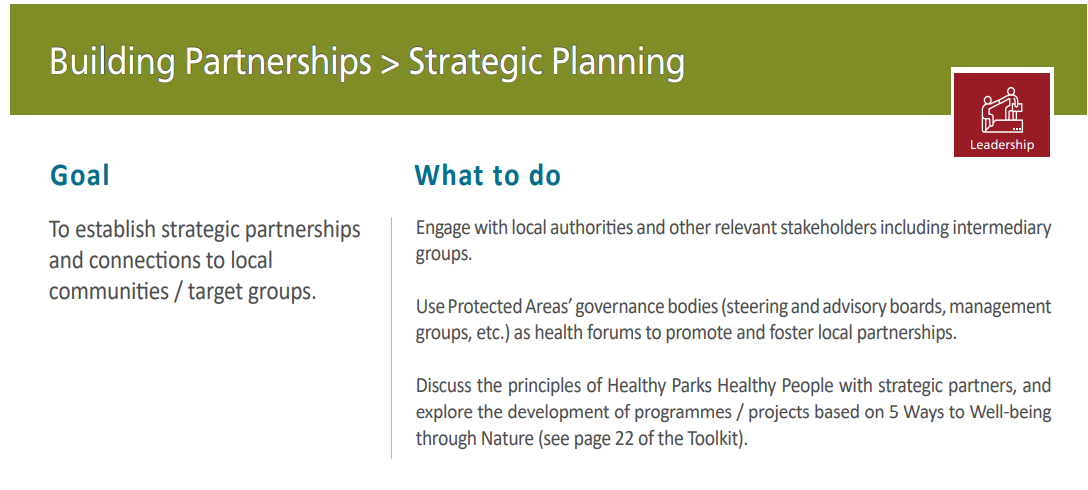
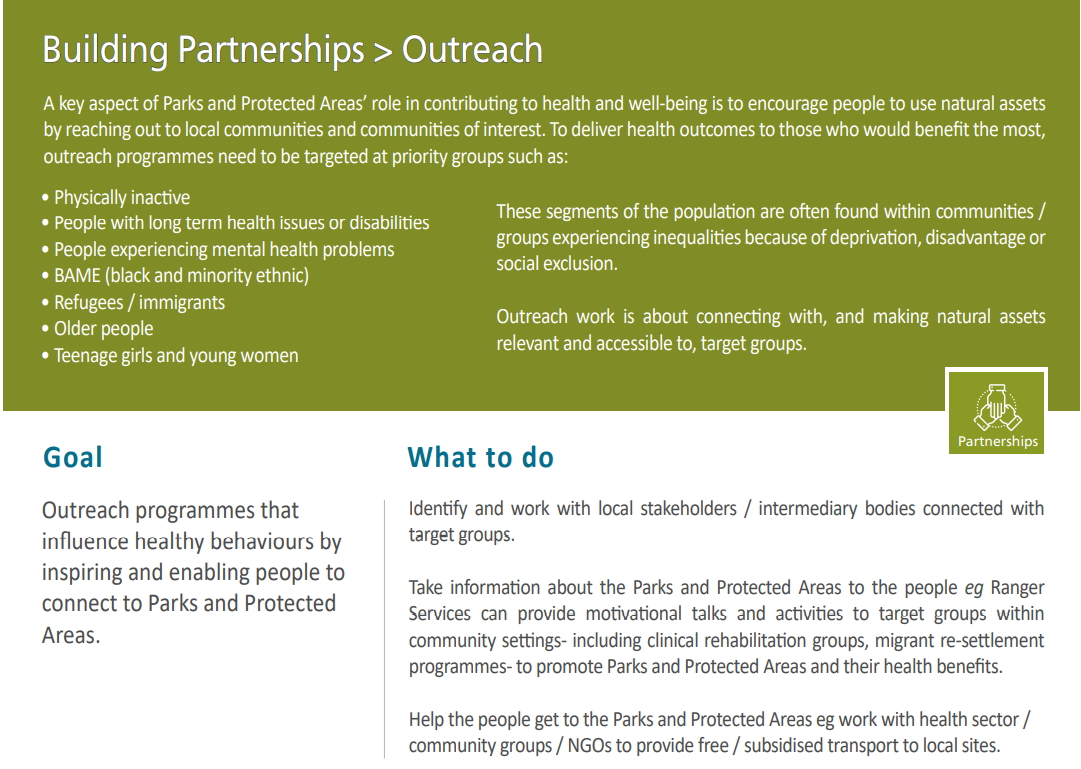
3) Developing Capacity and Practice
to promote best practice, build capacity and develop the evidence base on nature-based health interventions in Parks and Protected Areas.
Setting the scene
If Healthy Parks Healthy People Europe is to succeed in its vision of “happier and healthier people more connected to nature-rich Parks and Protected Areas” it is essential to expand the capacity
of members of the EUROPARC network and the cross-sector partners that they work with. This means awareness raising, skills development and sharing good practice, all of which will lead to the generation of better evidence on what makes a successful nature-based health initiative or intervention.
A range of training and development is available across Europe and within nations, and EUROPARC will be developing a Healthy Parks Healthy People Europe online network to help connect people and exchange learning, experience and resources as they are developed. There will also be opportunities to engage in webinars and conference workshops, but capacity-building also needs to be home grown by working with and through key local partners and training providers as local circumstances vary greatly across Europe.
Key Messages
- Parks and Protected Area staff are the vital ingredient needed to realise their sites’ potential to deliver health and well-being objectives.
- Networking between and within organisations that manage Parks and Protected Areas should be facilitated to share experience and build capacity in health promoting site management and related monitoring and evaluation.
- Support is available in a range of published advice, guidance and examples of good practice, as well as training and development opportunities.
- Learning from the health sector and people who want to use Parks and Protected Areas to improve their health and well-being will add knowledge and understanding
Case Studies
What did we learn?
- Building knowledge and understanding of health issues through dialogue and project work with the health sector, staff recruitment and inclusion of health expertise or governing or advisory
structures. - Keeping skills, competencies and knowledge up to date is necessary to be effective.Save time and money.
- Learning from others.
- Staying connected in networks.
What you can do - HPHPe Check List
The checklist provides guidance on implementing the programme.

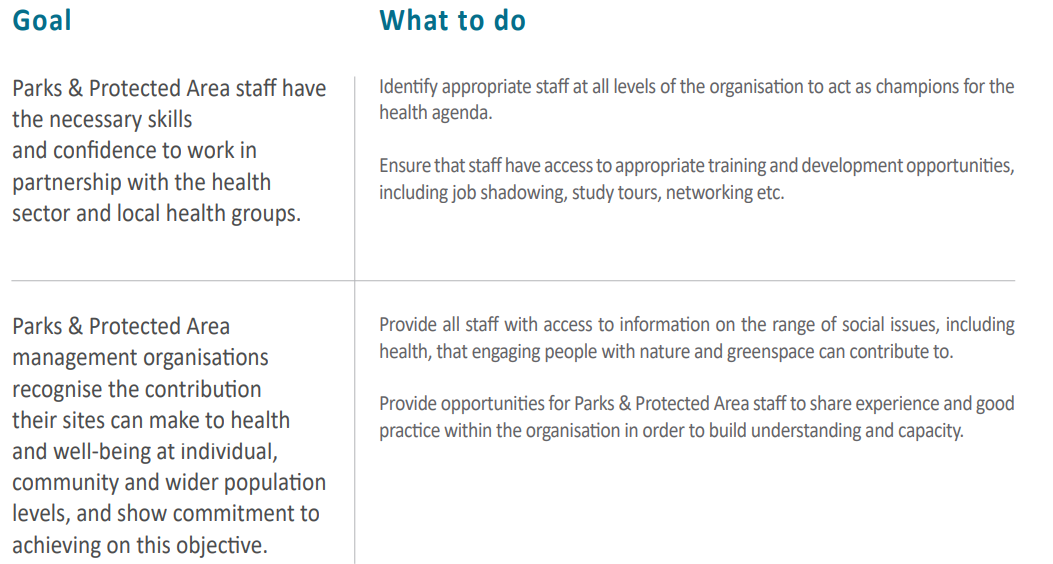

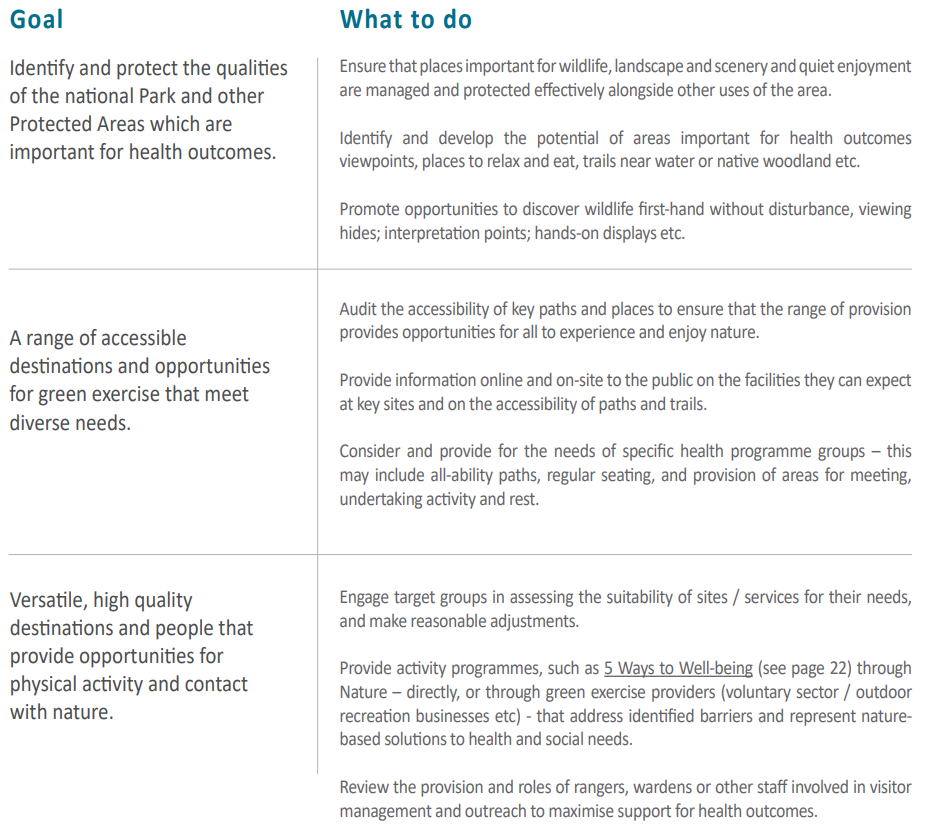

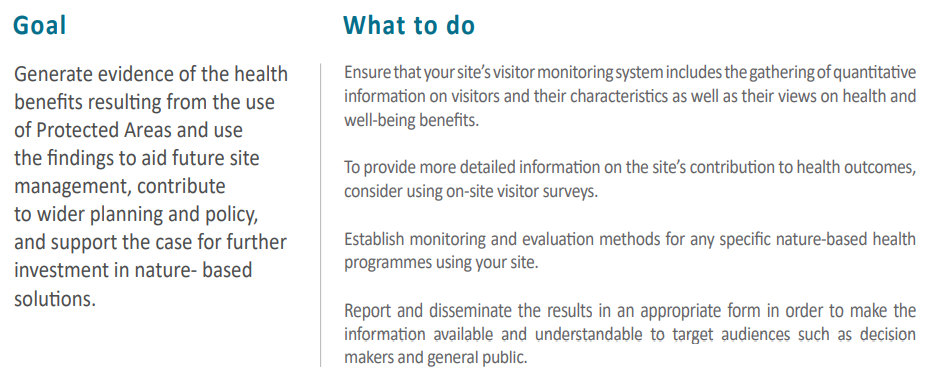
4) People and nature
to improve well-being and grow stronger pro-nature attitudes and behaviors in more people through the use of Parks and Protected Areas for improving public health.
Setting the scene
The Healthy Parks Healthy People Europe programme aims to contribute to the public health agenda and grow stronger pro-nature attitudes and behaviors in more people through the use
of Parks and Protected Areas for improved health and wellbeing. Collaborative working between the environment, health and other sectors can connect more people to nature whilst delivering mutual objectives.
At a strategic level, promoting “health in all policies” will help link environment, transport, education, sport and planning to government health priorities, and working together to develop nature-based solutions will enable cross-sector integration. In terms of on-the-ground delivery, a “nature for all” approach to help attract new audiences to Parks and Protected Areas and help reduce health inequalities.
The natural environment is associated with opportunities to make social contact, increase inter-generational connections, avoid isolation and enhance community cohesion. Experience of the outdoors and involvement in its care can lead to stronger more inclusive and sustainable communities. There are many examples of promotional projects and targeted interventions aimed at connecting people to nature.
Key Messages
- Healthy Parks Healthy People Europe is promoting use of the 5 Ways to Well-being, through Nature approach as the basis for green exercise projects in Parks and Protected Areas, as well as wider programmes and communications campaigns.
- Nature-based programmes and projects should be targeted at those people who would benefit the most, i.e. contribute to tackling health inequalities.
- Programmes and projects should be supported by communications initiatives that raise awareness within the public and the health sector of the health and well-being benefits of spending time outdoors.
In terms of communications associated with naturebased health projects, here are some key messages developed as part of Healthy Parks Healthy People Europe that will help to convey a consistent approach
Messages aimed at the public
- A walk in the Park – one step towards feeling healthier and happier
- Spending time in nature can lift our mood, combat anxiety and boost the immune system
- Outdoor activity and contact with nature can help sleep patterns, reduce stress, improve mood and self-esteem
- Healthy people need healthy nature
- By protecting nature, nature protects us!
- We can all protect nature, we all benefit from it!
Messages aimed at partners and stakeholders:
- Human health depends on healthy ecosystems – natural systems must be protected, restored and rationally managed
- Parks and Protected Areas are key assets for improving public health and reducing health inequalities
- Natural and human resources exist – we can work together and learn from each other
- Europe’s diverse natural environment is an under-utilised resource for improving public health
- Parks and Protected Areas are the perfect places to deliver naturebased solutions – healthy Parks support healthy people
- Contact with nature is important for our physical, mental and social health and well-being
- Parks and Protected Areas are our ‘natural health centres’ – healthy people need healthy nature
- Outdoor activity and contact with nature can help tackle key health challenges, contributing to prevention, treatment and recovery
- Investing in nature conservation is investing in social health
Did you know?
Some countries or organisations have developed specific nature-based programmes which aim to connect people and nature to achieve improvements in health and well-being. The practice of ShinrinYoku, or forest bathing, originated in Japan in 1982 as part of a national health program designed to reduce the stress levels of the population and has inspired a range of forest therapy programmes.
In Scotland, Branching Out is an outdoors multiactivity programme developed by Scottish Forestry for adults with mental health issues.
Health disparities between high income and low income groups are much narrower in areas with ample greenspace. (2012 Scottish Health Survey)
People living near green space experience less health complaints and better mental and physical health than those living in an urban environment.
For every 10% increase in green space there was a reduction in health complaints equivalent to a reduction of 5 years of age. (de Vries S, Verheij R A and Groenewegen P P,2001)
5 Ways to Well-being through Nature
To stimulate implementation of Healthy Parks Healthy People Europe, EUROPARC is promoting development of programmes and projects that use the 5 Ways to Well-being through Nature approach.
A way to bring environment and health professionals around the table to discuss nature-based solutions. The approach is based on the 2008 report by NEF (New Economics Foundation). The Five Ways to Wellbeing are a set of evidence-based public health messages aimed at improving people’s mental health and well-being. The Five Ways lend themselves to outdoor settings and can engage people in healthy physical activity and caring for nature whilst they:
- Be active
- Keep learning
- Take notice
- Connect
- Give
The approach aims to help people to change their behaviour and can be applied at both a broad-reaching programme level involving the development of policies, campaigns or initiatives, and as a site-based targeted health intervention. There are a number of examples of how the Five Ways have been adapted as a nature-based solution to help people realise that contact with nature can make them live better and feel better, including:
- Led by the public health department, the South Australia Government has delivered a communications campaign that encourages people to use the natural environment for health and well-being benefits
- In Cumbernauld, Scotland, Wild Ways Well is a local project delivered by environmental NGOs that supports people with mental health and associated problems
Case Studies
What did we learn?
Consider adopting the 5 Ways to Well-being through Nature approach in your Healthy Parks Healthy People programmes.
- Communicating the benefits of nature for people is good, but much better when that is backed up with support and appropriate park infrastructure
- Ensure your health and nature messages are clear and targeted
- Do something simple and do it more regularly
- Take an inclusive approach, work with other sectors, to disseminate messages and opportunities more widely
- Use of different communication channels for different audiences and make sure the language is not technical
The Health benefits of engaging with Nature
The evidence suggests that people are more likely to maintain regular physical activity in the outdoors – the attractive and changing surroundings aid motivation and it provides opportunities for social contact.
One in four adults will experience mental health problems at some point in their lives. Outdoor activity and contact with nature can help sleep patterns, reduce stress, improve mood and self-esteem, provide meaningful social contact.
The number of people with dementia is growing rapidly. Spending time in the outdoors can bring a range of benefits to people living with dementia and their carers.
A range of health benefits for young people, including better motor skills for children who play in green spaces; reduced symptoms of ADHD with contact with green spaces; more likelihood of physically active young people in greener and more walk-able neighbourhoods.
Experience of the natural environment by young people can be life changing in terms of confidence, and skills that can enhance job opportunities. Encouraging interest in the natural world and outdoor activity early in life instils confidence in using natural settings and has a positive role in supporting more active, healthier lifestyles in adult life.
The natural environment is associated with opportunities to make social contact, increase inter generational connections, avoid isolation and enhance community cohesion. Experience of the outdoors and involvement in its care can lead to stronger more inclusive and sustainable communities.
- There is a significant relationship between self-reported stress and the proportion of greenspace in the local area (Ward Thompson et al, 2012)
- People living close to greenspace are more likely to meet physical activity guidelines and less likely to be overweight or obese. (The relationship of physical activity and overweight to objectively measured greenspace accessibility and use, Coombes, 2011)
- Nature provides an added value to the known benefits of physical activity. Repeated exercise in nature is connected to better emotional well-being. (The Relationship between Perceived Health and Physical Activity Indoors, Outdoors in Built Environments, and Outdoors in Nature Pasanen, Tyrväinen & Korpela, 2014)
What you can do - HPHPe Check List
The checklist provides guidance on implementing the programme.
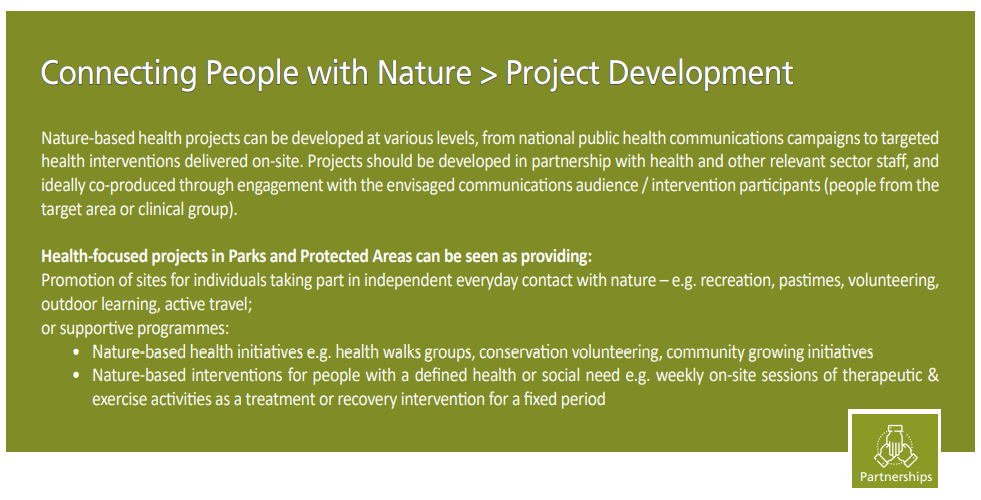
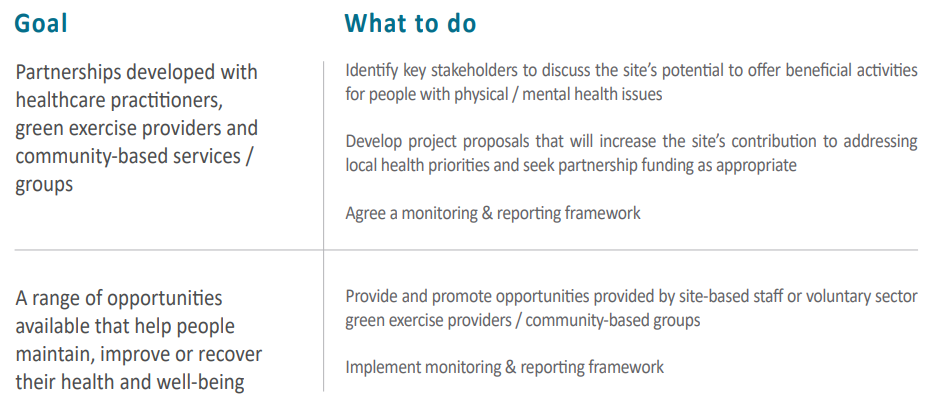
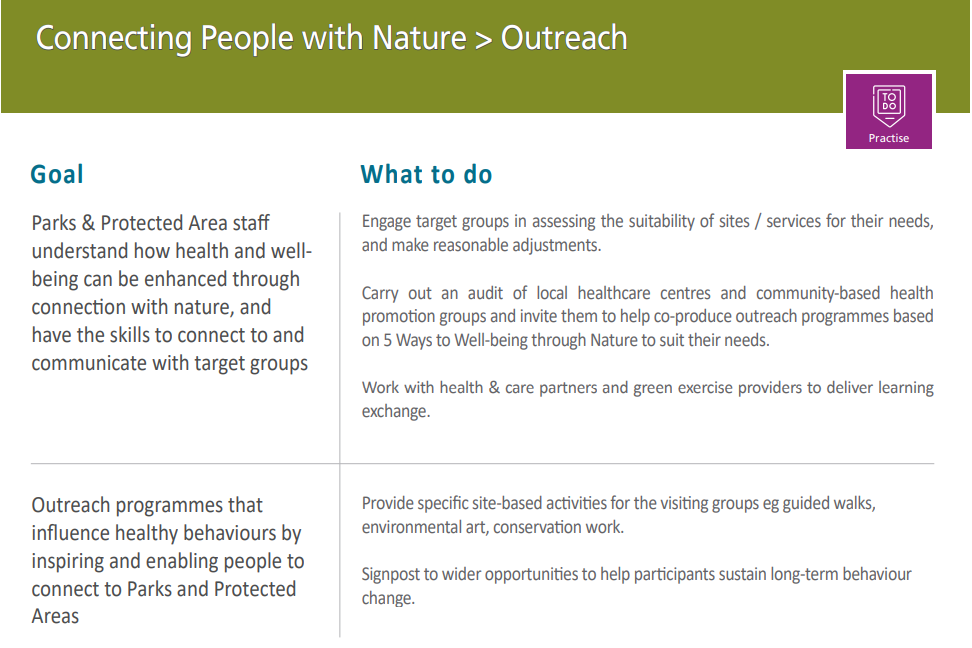
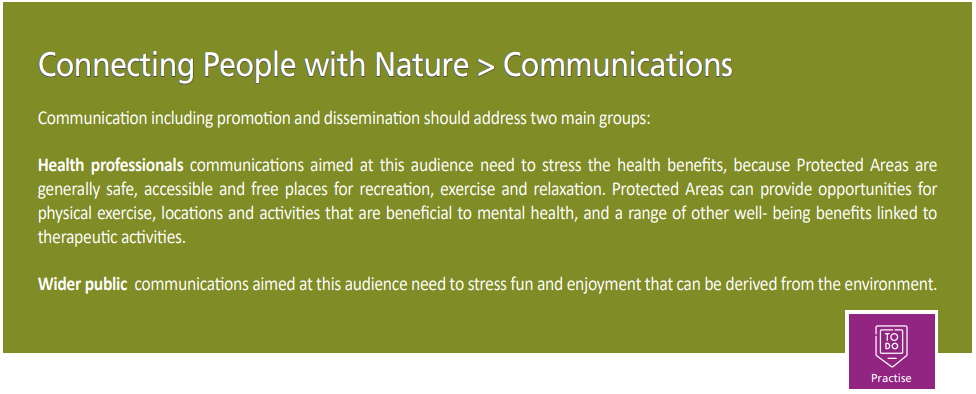
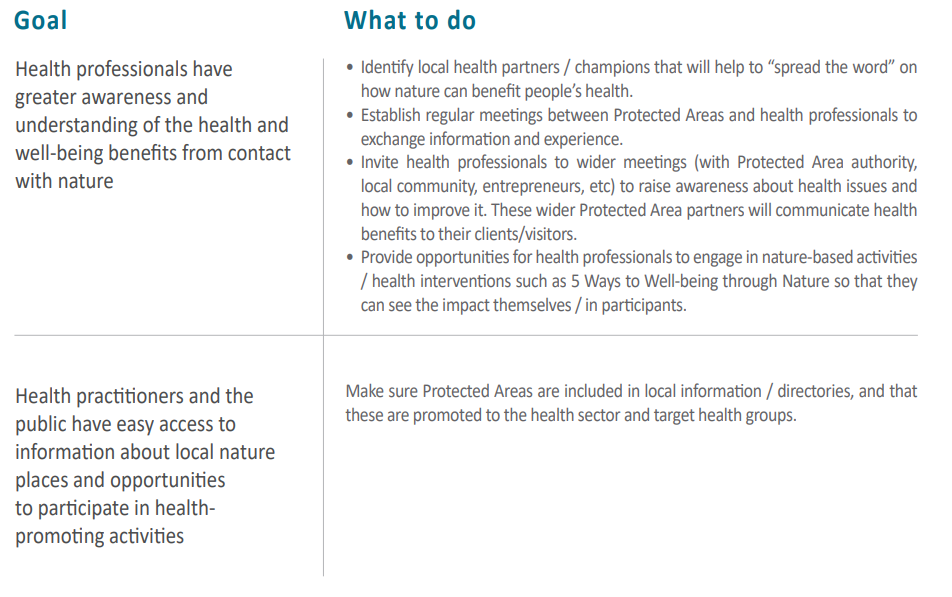
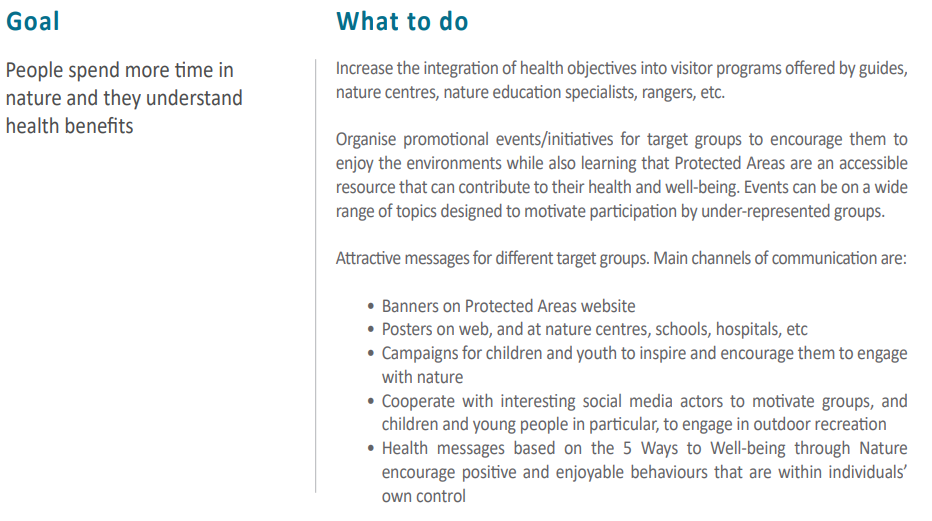
HPHPe Check list summary
The HPHPe Check-list summary below is designed to encourage you to consider your current practice and help you think about:
- How best to plan, manage and promote your sites to a wider range of
people to improve their general health and well-being; and - how to link your sites to the health sector so that people at risk of
or experiencing specific illness / health conditions can be supported to
make use of your sites
The check list is also available as an annex.
1) Strategic planning. Is there:
- A link between the management objectives of your site, and the national / regional / local health and well-being policy framework?
- A site management plan that engages with local health stakeholders and responds to health issues and priorities / target groups?
2) Site management. Does your site have:
- Easily accessible information on the facilities provided at the site?
- A sense of welcome for visitors?
- Visitor facilities such as Parking for people with disabilities; toilets?
- A range of access provision, from easy-going paths for people with health issues / disabilities, to specific equipment / furniture to promote physical activity?
- A range of activity programmes delivered directly, or through green exercise providers?
- Staff who are well trained to support visitors with health issues?
3) Project development. Is there:
- A project / range of activity programmes specifically designed to improve health & well-being and delivered directly, or through green exercise provider?
- A mechanism which enables you to connect and work with local partners from the health sector to co-produce naturebased projects aimed at health improvement?
4) Outreach. Does your site have:
- Engagement with health sector, intermediary bodies and target groups to ensure activity programmes and volunteering opportunities cater for their needs?
- Outreach programmes aimed at key target groups or communities?
5) Communications. Is there:
- Active engagement with local health professionals, providing information and opportunities to experience the ways your site can support health outcome?
- A communications plan for your site that specifies appropriate messages for health professionals and for the public / target health groups?
- Easily accessed information about the site and what it offers to a range of visitors?
6) Monitoring & Evaluation. Does your site have:
- A visitor monitoring system that gathers feedback on health benefit?
- Monitoring systems for the health benefits delivered through specific activity programmes / health interventions?
7) Staff training
- Do site staff have appropriate skills and confidence to work with health groups?
- Can you build wider awareness and capacity in your organisation on health?
Other opportunities. Are you able to:
- Identify local health sector partnerships and provide a place / activity programme / visual identity for green exercise referrals / sign-posting?
- Make access to information easier for health professionals and target groups to find by inputting into / establishing a central information service for a wide range of Parks / Protected Areas?
Conclusions
Nature can bring health benefits by connecting people, place and purpose. Time in a safe and healthy natural space, is a known antidote to stress. It lowers blood pressure, enhances the immune system, reduces anxiety and improves mood.
The COVID-19 experience has again thrown into sharp focus people’s need to access nature for their health and well-being. The climate emergency further adds to the case for linking the action needed to improve well-being and reduce health inequalities with action to protect and restore biodiversity.
To have healthy people you need Healthy Parks and access to them. The challenge is to do this in ways which provide opportunities for all to connect with nature, while retaining and enhancing the biodiversity of these places. As this toolkit has illustrated, HPHPe is both a conservation approach and a set concrete actions that are needed to gain political support, integrate policy frameworks and direct funding for Europe’s Parks and Protected areas whilst too guide HPHPe and at a practical level in planning and management.
The Healthy Parks Healthy People Europe programme is complemented by a toolkit, a collection of “how-to” experience that has emerged across Europe in the last few years. We hope that it will
provide the insight and inspiration to all those involved in Europe’s Parks and Protected Areas to establish HPHPe programmes and projects tailored to their needs and circumstances, and which will lead to more good practice being developed which can be shared across our network.
EUROPARC remains committed to working in partnership across sectors, and advocates for better policy integration and of course investment, to deliver our vision of “happier and healthier people more connected to nature-rich Parks and Protected Areas”.
Want to learn more about HPHPe, be part of the programme and join our network! Then please contact us at hphpe@europarc.org.
Useful References
- The health benefits of the great outdoors: A systematic review and meta-analysis of greenspace exposure and health outcomes, 2019 C T-Bennet, A Jones
- Nature and mental health: an ecosystem service perspective, 2019 Bratman et al
- Health and the natural environment: a review of evidence, policy, practice and opportunities for the future, 2018 DEFRA and University of Exeter
- A Dose of Nature: addressing chronic health conditions by using the environment, 2014 University of Exeter
- The Great Outdoors: how a green exercise environment can benefit all, 2013 Gladwell et al
- Benefits of connecting children with greenspace – range of evidence
- Nature-based integration Nordic experiences and examples, 2017 Pitkänen et al
- Natural outdoor environments and mental and physical health: Relationships and mechanisms, 2015 Triguero et al
You can download a PDF version of the toolkit and its Annex here.
